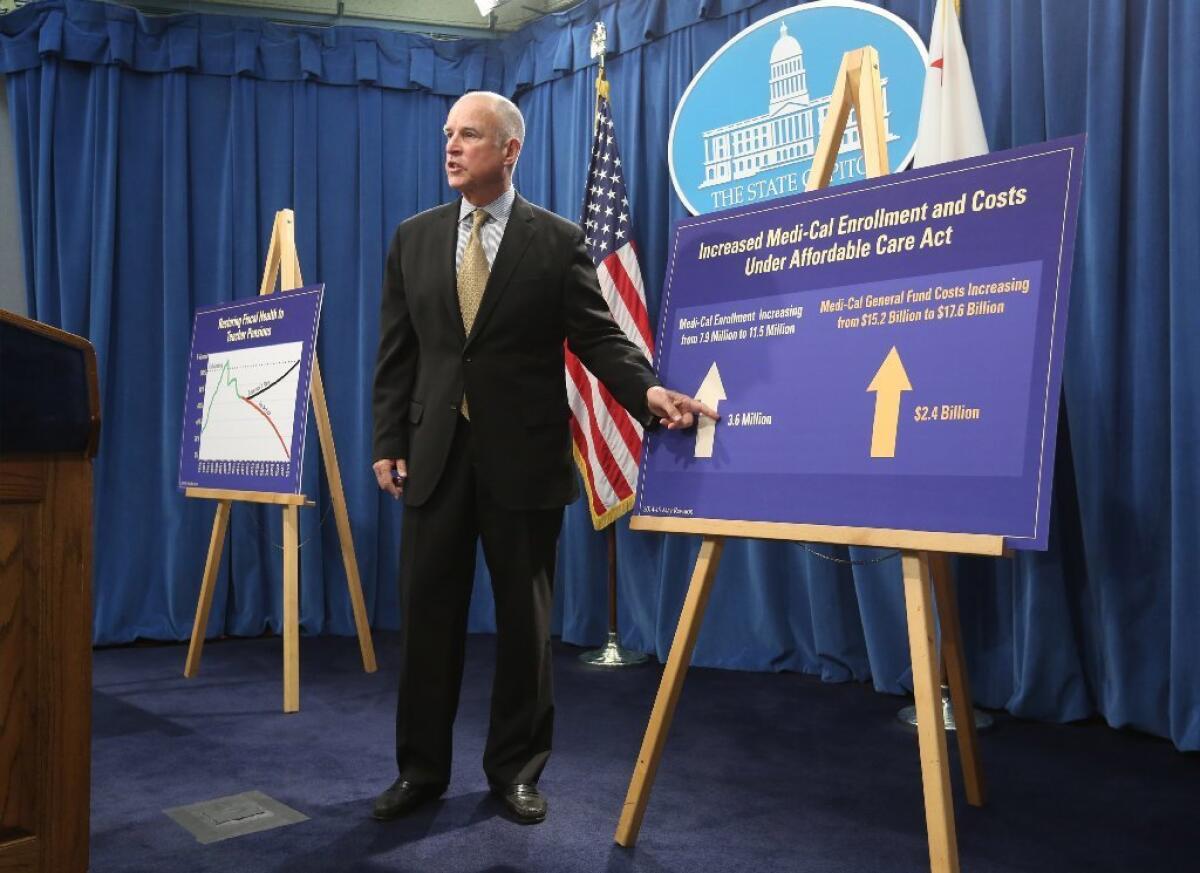Editorial: An ill-considered mandate on school funding

A stronger state economy, voter-approved temporary tax increases and new budget rules have helped drain some of the drama out of the Legislature’s annual budget process. And with lawmakers now having completed that process on time for four consecutive years, one might be tempted to say that there’s a new normal in Sacramento. But some things haven’t changed, most notably the maddening practice of inserting controversial policy changes at the last minute with little or no public debate. This year’s Exhibit A: an ill-considered mandate that could force local school districts to spend down most of their reserves in one fell swoop. Lawmakers should reconsider that requirement before it has the chance to scramble local school budgets.
The Legislature gave its blessing to a $156-billion spending package Sunday for the fiscal year that begins July 1. Although we disagree with some of the decisions that lawmakers made, they prudently accepted Gov. Jerry Brown’s more conservative revenue projections, his proposed $1.6-billion reserve and his call to pay off more of the state’s debt. Unfortunately, they also agreed to Brown’s last-minute demand that local school reserves be capped by the state if and when Sacramento starts to build a new rainy-day fund. The proposal surfaced last week and had no formal public hearings.
The main advocates for the cap were Brown and the California Teachers Assn., which accused local districts of “holding back” dollars instead of spending them on students. And there is a certain logic to questioning how much state aid local districts should keep in reserve if voters approve an expanded state backup fund in November. But the measure lawmakers adopted is flawed in both letter and spirit. It would require districts to spend down any reserves above the cap — including amounts held for future textbook or technology purchases, as well as funds raised from local parcel taxes — the year after the state starts building its new rainy-day fund for schools, regardless of how little that fund may hold. Proponents note that the cap on local reserves is two to three times the minimum amount the state requires districts to keep, but that generally translates into only a few weeks’ worth of payroll.
One ostensible purpose of the measure is to require districts to disclose more information about the money they’re not spending. But the real rationale seems to be to stop districts from being cautious about the state’s boom-and-bust revenues and from saving money before they spend it. It pushes the state in exactly the opposite direction of the Brown administration’s laudable efforts to take fewer fiscal risks and to transfer decision-making authority from the state to the local school boards chosen by voters. The Legislature should undo this mischief the first chance it gets.
More to Read
A cure for the common opinion
Get thought-provoking perspectives with our weekly newsletter.
You may occasionally receive promotional content from the Los Angeles Times.






